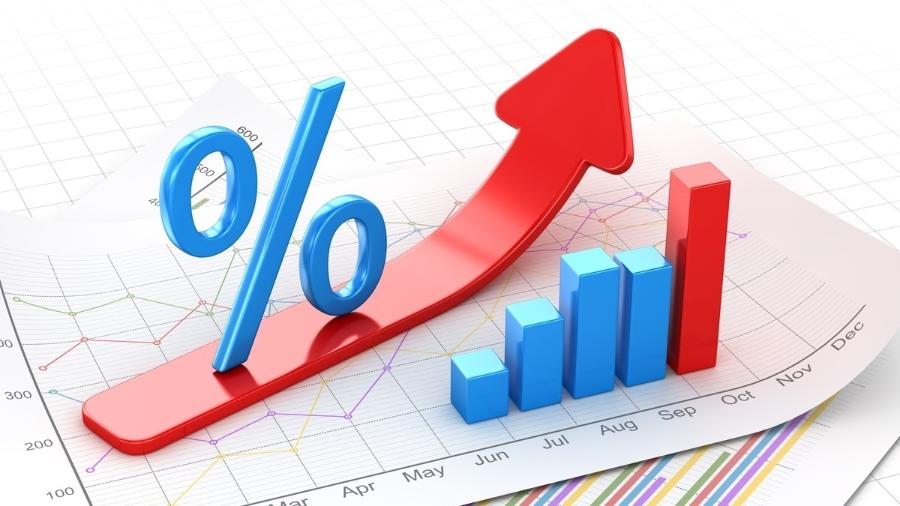Compound interest is a powerful financial concept that can significantly impact the growth of long-term investments in the US. Understanding how it works and how to harness its potential is crucial for investors looking to maximize their returns.
While simple interest calculates interest only on the principal amount, compound interest accumulates on both the principal and the previously earned interest. This compounding effect leads to exponential growth over time, which can be a game changer for dedicated investors.
The basics of compound interest

At its core, compound interest means earning interest on interest, allowing your investment to grow at an accelerated rate. Simply put, it’s the result of reinvesting interest, rather than paying it out, so that interest is then earned on the initial principal as well as on the accumulated interest from previous periods.
The frequency of compounding plays a significant role in the final amount of your investment. For instance, interest compounded monthly will yield more than interest compounded annually, given the same annual rate. This is why understanding the compounding frequency is essential to making informed investment decisions.
Investors must also consider the rule of 72, a simple formula to estimate the number of years required to double the invested money at a given annual rate of return. By dividing 72 by the annual interest rate, one can quickly gauge how long it will take to see significant growth.
The power of time in investment growth
One of the most critical factors influencing the effect of compound interest is time. The longer the investment period, the greater the potential for compound interest to work its magic. This is why starting early is often emphasized in investment strategies.
A practical example can illustrate this point. Suppose an individual invests $10,000 at an annual interest rate of 5%. Over 30 years, with interest compounded annually, the investment would grow to approximately $43,219. If the same amount is left for 40 years, it would increase to about $70,400. The difference is striking, demonstrating the power of time.
Early investment gives compound interest more periods to work, thereby increasing the total returns significantly. Hence, the sooner one begins investing, the greater the wealth accumulation potential over the long term.
Calculating compound interest
To fully appreciate and harness the power of compound interest, investors should familiarize themselves with the compound interest formula: A = P (1 + r/n)^(nt). In this equation, A represents the future value of the investment, P is the principal investment amount, r is the annual interest rate, n is the number of times interest is compounded per year, and t is the number of years the money is invested.
Using this formula allows one to calculate the future value of their investments under different compounding conditions. While calculators and online tools can simplify this process, understanding the underlying math can provide deeper insights into investment growth potential.
By experimenting with different values for the variables in the formula, investors can see firsthand how changes in the interest rate, compounding frequency, and investment duration can impact their overall returns. This knowledge can guide them in making more informed financial decisions.
Maximizing your investment returns
To fully leverage the benefits of compound interest, investors should employ strategies that maximize their investment returns. One key approach is to reinvest dividends instead of taking them as cash payouts. This reinvestment allows earnings to be added to the principal, further benefiting from compounding.
Another effective tactic is systematic investing, such as dollar-cost averaging. This method involves investing a fixed amount regularly, regardless of market conditions. Over time, this can reduce the average cost per share and mitigate the impact of market volatility, leading to potential higher returns.
Diversifying investments across various asset classes can also enhance returns by spreading risk and taking advantage of different growth opportunities. A well-balanced portfolio can provide stability and growth, helping investors achieve their long-term financial goals.
The role of financial planning
Sound financial planning is crucial for capitalizing on compound interest. Developing a clear investment strategy, setting realistic goals, and regularly reviewing and adjusting the portfolio can ensure that investors stay on track.
Creating a diversified and balanced portfolio aligned with one’s risk tolerance and financial objectives is essential. Additionally, considering tax implications and leveraging tax-advantaged accounts, such as IRAs and 401(k)s, can further enhance growth potential.
Consulting with financial advisors can provide valuable insights and personalized guidance. These professionals can help investors navigate complex investment landscapes, make informed decisions, and optimize their strategies to harness the full power of compound interest.
Compound interest has a profound impact on the growth of long-term investments in the United States. By understanding its principles, recognizing the significance of time, and employing effective investment strategies, investors can maximize their returns and achieve their financial aspirations.
Starting early, reinvesting earnings, and employing sound financial planning are key to making the most of compound interest. With the right approach, the seemingly modest gains can compound into substantial wealth over time, helping investors secure their future. In short, mastering the concept of compound interest can be a game changer for anyone looking to grow their investments and build lasting financial security.
